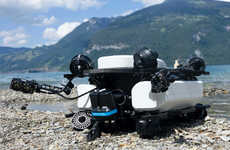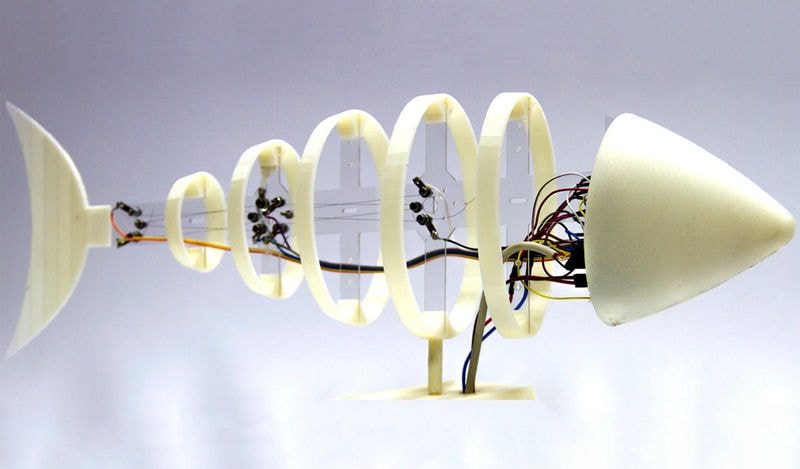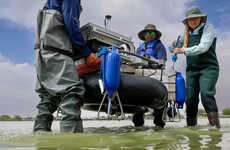
The Bio-Mimetic Robotic Fish are Laden with Sensors to Test Water Health
Alyson Wyers — June 8, 2017 — Eco
References: upm.es & springwise
This robotic fish was designed to test the water health at fish farms. Developed by researchers from the University of Florence, the Technical University of Madrid and the Center for Automation and Robotics, the biology-inspired robot fish moves just like the real thing in order to monitor pH levels in water.
The autonomous aquatic robots are equipped with sensors to measure pH levels and will change its swimming patterns to indicate where dangerously acidic or poisonous areas are. The bio-mimetic prototype is 30 cm long and is made out of a "shape memory alloy" to mimic the flexibility of a fish's backbone.
This method to monitor water health is a way to better meet the demand and supply for food as the world's population grows.
The autonomous aquatic robots are equipped with sensors to measure pH levels and will change its swimming patterns to indicate where dangerously acidic or poisonous areas are. The bio-mimetic prototype is 30 cm long and is made out of a "shape memory alloy" to mimic the flexibility of a fish's backbone.
This method to monitor water health is a way to better meet the demand and supply for food as the world's population grows.
Trend Themes
1. Robotics for Wastewater Management - Developing aquatic robots with sensors and flexible bodies to test wastewater health presents opportunities for the adoption of new automation technologies in wastewater management.
2. Bio-inspired Robotics for Environmental Monitoring - Creating robotics that mimic the movements and behavior of living organisms can provide more efficient and accurate ways to monitor environmental conditions for a range of industries from agriculture to ecology.
3. Intelligent Automation in Aquaculture - The use of robotics with autonomous capabilities such as sensing and computation in fish farming operations would enable real-time monitoring of water quality and reduce labor costs.
Industry Implications
1. Aquaculture - The use of bio-mimetic robotic fish equipped with sensors can provide an efficient and cost-effective way to monitor water quality in fish farming operations.
2. Wastewater Management - Aquatic robots with autonomous capabilities for testing wastewater quality can revolutionize the way wastewater is monitored and treated in industries such as municipal water treatment and food processing.
3. Environmental Monitoring - The development of bio-inspired robots that can mimic the movement patterns and behavior of fish and other water creatures presents an innovative way to monitor the environment for various industries including ecology, conservation, and marine biology.
4.8
Score
Popularity
Activity
Freshness
























